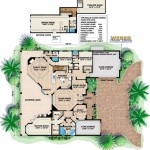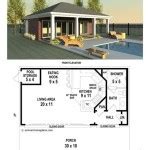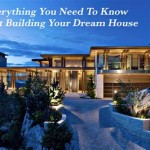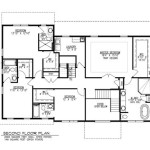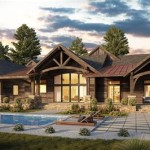Narrow lot house plans are designs for homes built on narrow pieces of land, typically found in urban or suburban areas. These plans are tailored to maximize space and functionality while adhering to specific lot size restrictions. For instance, a common lot width for narrow lot house plans is around 25 to 40 feet, which presents unique design challenges.
The purpose of narrow lot house plans is to creatively utilize the available space, ensuring efficient use of every square foot. They often employ innovative architectural techniques to create livable and comfortable homes on narrow lots. These plans consider factors such as natural light, ventilation, and privacy to create a harmonious living environment.
In the following sections, we will delve into the key design elements, advantages, and considerations of narrow lot house plans. We will explore the architectural strategies employed to create functional and aesthetically pleasing homes on narrow lots, providing valuable insights for architects, builders, and homeowners alike.
Here are 10 important points about narrow lot house plans:
- Maximize space and functionality
- Built on narrow pieces of land
- Common lot width: 25-40 feet
- Utilize innovative design techniques
- Efficient use of every square foot
- Consider natural light, ventilation, privacy
- Create livable and comfortable homes
- Suitable for urban and suburban areas
- Can be aesthetically pleasing
- Address unique design challenges
These points highlight the key aspects and benefits of narrow lot house plans, making them a viable option for homeowners seeking to build on narrow lots.
Maximize space and functionality
Maximizing space and functionality is a crucial aspect of narrow lot house plans. Architects and designers employ various strategies to ensure that every square foot of the home is used efficiently and effectively. One common approach is to incorporate open floor plans, which eliminate unnecessary walls and partitions, creating a more spacious and airy feel. This open concept allows for seamless flow of movement and natural light throughout the home.
Another space-saving technique is the use of multi-purpose rooms. For example, a room can serve as both a living room and a dining room, or a bedroom can double as a home office. Built-in storage solutions, such as shelves, cabinets, and drawers, are also essential for maximizing space utilization. These built-ins can be incorporated into walls, under stairs, or in other unused areas, providing ample storage without cluttering the living space.
Vertical space is also utilized to the fullest extent in narrow lot house plans. Lofts and mezzanines can be added to create additional living areas or storage space. High ceilings and large windows help to create an illusion of spaciousness, making the home feel larger than it actually is. Additionally, skylights and solar tubes can be installed to bring in natural light, reducing the need for artificial lighting and further enhancing the sense of spaciousness.
By carefully considering the use of space and implementing innovative design solutions, narrow lot house plans can create homes that are both functional and comfortable, despite the limited lot size. These homes offer a high quality of living without compromising on space or functionality.
Built on narrow pieces of land
Narrow lot house plans are specifically designed to be built on narrow pieces of land, which typically have a width of 25 to 40 feet. These plans are tailored to make the most of the available space while adhering to the lot size restrictions. Architects and designers must carefully consider the orientation of the home on the lot, as well as the placement of windows, doors, and other features to ensure optimal use of space and natural light.
One of the challenges of building on a narrow lot is ensuring that the home has sufficient natural light and ventilation. To address this, narrow lot house plans often incorporate large windows and skylights to maximize natural light penetration. Additionally, courtyards and light wells can be used to bring light into the interior of the home, creating a brighter and more inviting living environment.
Another challenge is creating a sense of privacy on a narrow lot, as homes are often built close together. To address this, narrow lot house plans often employ creative landscaping techniques, such as planting trees and shrubs to create natural privacy screens. Fences and walls can also be used to enhance privacy, while still allowing for natural light to enter the home.
Building on a narrow lot requires careful planning and design to ensure that the home is functional, comfortable, and aesthetically pleasing. However, with the right design approach, narrow lot house plans can create homes that are as spacious and livable as homes built on larger lots.
Common lot width: 25-40 feet
The common lot width for narrow lot house plans is between 25 to 40 feet. This width presents unique design challenges for architects and builders, as they must create homes that are both functional and aesthetically pleasing within these constraints. However, with careful planning and creative design, it is possible to build beautiful and comfortable homes on narrow lots.
One of the challenges of designing for a narrow lot is ensuring that the home has sufficient natural light and ventilation. To address this, narrow lot house plans often incorporate large windows and skylights to maximize natural light penetration. Additionally, courtyards and light wells can be used to bring light into the interior of the home, creating a brighter and more inviting living environment.
Another challenge is creating a sense of privacy on a narrow lot, as homes are often built close together. To address this, narrow lot house plans often employ creative landscaping techniques, such as planting trees and shrubs to create natural privacy screens. Fences and walls can also be used to enhance privacy, while still allowing for natural light to enter the home.
Finally, narrow lot house plans must carefully consider the placement of rooms and other features to ensure efficient use of space. Open floor plans are often used to create a more spacious feel, while built-in storage solutions help to maximize space utilization. Vertical space is also utilized to the fullest extent, with lofts and mezzanines often being incorporated to create additional living areas or storage space.
By carefully considering all of these factors, architects and builders can create narrow lot house plans that are both functional and aesthetically pleasing. These homes offer a high quality of living without compromising on space or style.
Utilize innovative design techniques
Narrow lot house plans utilize innovative design techniques to maximize space and functionality within the constraints of a narrow lot. One common technique is to incorporate open floor plans, which eliminate unnecessary walls and partitions, creating a more spacious and airy feel. This open concept allows for seamless flow of movement and natural light throughout the home.
Another space-saving technique is the use of multi-purpose rooms. For example, a room can serve as both a living room and a dining room, or a bedroom can double as a home office. Built-in storage solutions, such as shelves, cabinets, and drawers, are also essential for maximizing space utilization. These built-ins can be incorporated into walls, under stairs, or in other unused areas, providing ample storage without cluttering the living space.
Vertical space is also utilized to the fullest extent in narrow lot house plans. Lofts and mezzanines can be added to create additional living areas or storage space. High ceilings and large windows help to create an illusion of spaciousness, making the home feel larger than it actually is. Additionally, skylights and solar tubes can be installed to bring in natural light, reducing the need for artificial lighting and further enhancing the sense of spaciousness.
In addition to these space-saving techniques, narrow lot house plans often incorporate innovative design features to create a sense of privacy and outdoor living space. Courtyards and light wells can be used to bring natural light into the interior of the home, while also providing a private outdoor space. Green roofs and rooftop terraces can also be incorporated to create additional outdoor living space and improve the home’s energy efficiency.
By carefully considering all of these factors, architects and builders can create narrow lot house plans that are both functional and aesthetically pleasing. These homes offer a high quality of living without compromising on space or style.
Efficient use of every square foot
Efficient use of every square foot is a crucial aspect of narrow lot house plans. With limited space available, it is essential to maximize the functionality and livability of the home without compromising on comfort or style. Architects and designers employ various innovative techniques to achieve this, ensuring that every square foot of the home is utilized to its full potential.
One common approach is to incorporate open floor plans, which eliminate unnecessary walls and partitions, creating a more spacious and airy feel. This open concept allows for seamless flow of movement and natural light throughout the home. Additionally, multi-purpose rooms are often used to maximize space utilization. For example, a room can serve as both a living room and a dining room, or a bedroom can double as a home office. Built-in storage solutions, such as shelves, cabinets, and drawers, are also essential for maximizing space utilization. These built-ins can be incorporated into walls, under stairs, or in other unused areas, providing ample storage without cluttering the living space.
Vertical space is also utilized to the fullest extent in narrow lot house plans. Lofts and mezzanines can be added to create additional living areas or storage space. High ceilings and large windows help to create an illusion of spaciousness, making the home feel larger than it actually is. Additionally, skylights and solar tubes can be installed to bring in natural light, reducing the need for artificial lighting and further enhancing the sense of spaciousness.
In addition to these space-saving techniques, narrow lot house plans often incorporate innovative design features to create a sense of privacy and outdoor living space. Courtyards and light wells can be used to bring natural light into the interior of the home, while also providing a private outdoor space. Green roofs and rooftop terraces can also be incorporated to create additional outdoor living space and improve the home’s energy efficiency.
By carefully considering all of these factors, architects and builders can create narrow lot house plans that are both functional and aesthetically pleasing. These homes offer a high quality of living without compromising on space or style.
Consider natural light, ventilation, privacy
Incorporating natural light, ventilation, and privacy into narrow lot house plans is essential for creating comfortable and livable homes. Architects and designers employ various strategies to ensure that these elements are carefully considered in the design process.
Natural light
Natural light is crucial for creating a bright and inviting living environment. In narrow lot house plans, large windows and skylights are often used to maximize natural light penetration. These windows and skylights can be strategically placed to capture sunlight at different times of the day, reducing the need for artificial lighting and creating a more energy-efficient home. Additionally, courtyards and light wells can be incorporated into the design to bring natural light into the interior of the home, even in areas where windows are limited.
Ventilation
Proper ventilation is essential for maintaining a healthy indoor environment and ensuring the comfort of the occupants. In narrow lot house plans, cross-ventilation is often employed to create a natural flow of air through the home. This can be achieved by placing windows and vents on opposite sides of the house, allowing air to circulate freely. Additionally, mechanical ventilation systems, such as exhaust fans and air conditioners, can be incorporated to supplement natural ventilation and ensure that the air quality within the home is maintained.
Privacy
Privacy is an important consideration in narrow lot house plans, as homes are often built close together. To address this, architects and designers employ creative landscaping techniques, such as planting trees and shrubs to create natural privacy screens. Fences and walls can also be used to enhance privacy, while still allowing for natural light to enter the home. Additionally, the orientation of the home on the lot can be carefully considered to minimize exposure to neighboring properties and maximize privacy.
By carefully considering natural light, ventilation, and privacy, architects and builders can create narrow lot house plans that are both functional and aesthetically pleasing. These homes offer a high quality of living without compromising on comfort or style.
Create livable and comfortable homes
Creating livable and comfortable homes is at the heart of narrow lot house plans. Despite the limited space available, architects and designers employ various innovative techniques to ensure that these homes offer a high quality of living without compromising on comfort or style.
One of the key considerations in creating livable and comfortable homes is ensuring that the home has sufficient natural light and ventilation. This can be achieved through the use of large windows and skylights, which allow natural light to penetrate deep into the home. Additionally, courtyards and light wells can be incorporated into the design to bring natural light into the interior of the home, even in areas where windows are limited. Proper ventilation is also essential for maintaining a healthy indoor environment and ensuring the comfort of the occupants. Cross-ventilation is often employed in narrow lot house plans to create a natural flow of air through the home. This can be achieved by placing windows and vents on opposite sides of the house, allowing air to circulate freely.
Another important consideration is maximizing space utilization. Every square foot of space must be used efficiently to create a functional and comfortable living environment. Open floor plans are often used to create a more spacious and airy feel, while built-in storage solutions help to maximize space utilization. Vertical space is also utilized to the fullest extent, with lofts and mezzanines often being incorporated to create additional living areas or storage space. High ceilings and large windows help to create an illusion of spaciousness, making the home feel larger than it actually is.
Finally, privacy is an important consideration in narrow lot house plans, as homes are often built close together. To address this, architects and designers employ creative landscaping techniques, such as planting trees and shrubs to create natural privacy screens. Fences and walls can also be used to enhance privacy, while still allowing for natural light to enter the home. Additionally, the orientation of the home on the lot can be carefully considered to minimize exposure to neighboring properties and maximize privacy.
By carefully considering all of these factors, architects and builders can create narrow lot house plans that are both functional and aesthetically pleasing. These homes offer a high quality of living without compromising on space or style.
Suitable for urban and suburban areas
Narrow lot house plans are well-suited for both urban and suburban areas, offering a number of advantages in these settings.
In urban areas, narrow lot house plans can help to maximize space utilization on small lots, which are often found in densely populated areas. These plans allow for the construction of homes that are both functional and comfortable, even on narrow pieces of land. Additionally, narrow lot house plans can help to reduce the overall footprint of a home, which can be beneficial in areas where land is scarce and expensive.
In suburban areas, narrow lot house plans can help to create a more cohesive and pedestrian-friendly neighborhood. These plans can be used to create homes that are closer together, which can encourage walking and biking and reduce the need for car travel. Additionally, narrow lot house plans can help to preserve green space and open areas, which can improve the overall quality of life in a suburban community.
Overall, narrow lot house plans offer a number of advantages for both urban and suburban areas. These plans can help to maximize space utilization, create more cohesive neighborhoods, and preserve green space. As a result, narrow lot house plans are becoming increasingly popular in both urban and suburban settings.
Here are some specific examples of how narrow lot house plans are being used in urban and suburban areas:
- In San Francisco, California, narrow lot house plans are being used to create affordable housing options in a densely populated urban area. These homes are often built on small lots and feature innovative design features to maximize space utilization.
- In Austin, Texas, narrow lot house plans are being used to create a more pedestrian-friendly and sustainable neighborhood. These homes are built closer together and feature front porches and other design features that encourage walking and biking.
- In Denver, Colorado, narrow lot house plans are being used to preserve green space and open areas in a growing suburban community. These homes are often built on smaller lots and feature designs that minimize their impact on the environment.
These are just a few examples of how narrow lot house plans are being used to create livable and sustainable communities in both urban and suburban areas.
Can be aesthetically pleasing
Narrow lot house plans can be aesthetically pleasing, despite the challenges of designing on a narrow piece of land. Architects and designers employ various strategies to create homes that are both functional and beautiful.
One way to make a narrow lot house plan aesthetically pleasing is to use a variety of materials and textures on the exterior of the home. This can help to create visual interest and make the home stand out from its neighbors. Additionally, the use of landscaping can help to soften the lines of the home and create a more inviting curb appeal.
Another way to make a narrow lot house plan aesthetically pleasing is to use creative window placement. Windows can be used to bring in natural light and create a sense of openness, even on a narrow lot. Additionally, the use of different window styles can add visual interest to the home’s exterior.
Finally, the use of outdoor living spaces can help to make a narrow lot house plan more aesthetically pleasing. Patios, decks, and balconies can extend the living space outdoors and create a place to relax and entertain. Additionally, the use of outdoor lighting can help to create a warm and inviting atmosphere in the evening.
By carefully considering all of these factors, architects and designers can create narrow lot house plans that are both functional and aesthetically pleasing. These homes offer a high quality of living without compromising on space or style.
Address unique design challenges
Narrow lot house plans present unique design challenges that require careful consideration and innovative solutions. One of the primary challenges is maximizing space utilization while maintaining functionality and comfort. Architects and designers must employ creative strategies to create homes that feel spacious and livable, despite the limited width of the lot.
Another challenge is ensuring that the home has sufficient natural light and ventilation. Narrow lots often have limited access to natural light, especially in urban areas where homes are built close together. To address this, architects and designers incorporate large windows, skylights, and courtyards to bring natural light into the interior of the home. Additionally, proper ventilation is essential for maintaining a healthy indoor environment. Cross-ventilation can be achieved by placing windows and vents on opposite sides of the home, allowing air to circulate freely.
Privacy is another important consideration in narrow lot house plans. Homes built on narrow lots are often close to neighboring properties, which can create privacy concerns. To address this, architects and designers employ creative landscaping techniques, such as planting trees and shrubs to create natural privacy screens. Fences and walls can also be used to enhance privacy, while still allowing for natural light to enter the home. Additionally, the orientation of the home on the lot can be carefully considered to minimize exposure to neighboring properties and maximize privacy.
Finally, narrow lot house plans must carefully consider the placement of rooms and other features to ensure efficient use of space. Open floor plans are often used to create a more spacious feel, while built-in storage solutions help to maximize space utilization. Vertical space is also utilized to the fullest extent, with lofts and mezzanines often being incorporated to create additional living areas or storage space. High ceilings and large windows help to create an illusion of spaciousness, making the home feel larger than it actually is.
By carefully considering all of these unique design challenges, architects and designers can create narrow lot house plans that are both functional and aesthetically pleasing. These homes offer a high quality of living without compromising on space or style.










Related Posts

